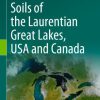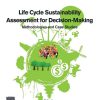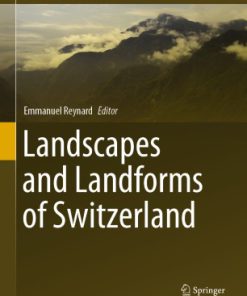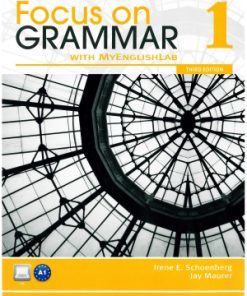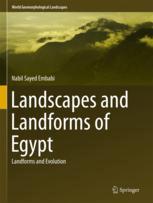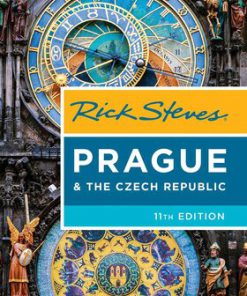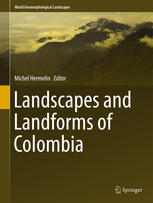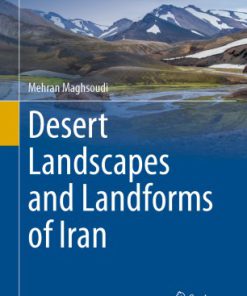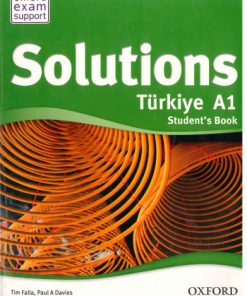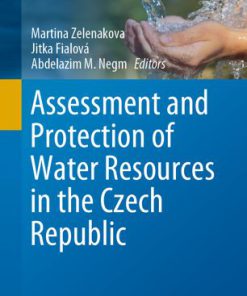Landscapes and Landforms of the Czech Republic 1st Edition by Tomáš Pánek 3319275376 9783319275376
$50.00 Original price was: $50.00.$25.00Current price is: $25.00.
Landscapes and Landforms of the Czech Republic 1st Edition by Tomáš Pánek – Ebook PDF Instant Download/DeliveryISBN: 3319275376, 9783319275376
Full download Landscapes and Landforms of the Czech Republic 1st Edition after payment.

Product details:
ISBN-10 : 3319275376
ISBN-13 : 9783319275376
Author: Tomáš Pánek
The book aims to present the unique geomorphological landscapes of the Czech Republic. The geomorphic uniqueness of this country benefits from the proximity to two distinct European geological domains: the old cratonized Bohemian Massif and the relatively young Tertiary fold and thrust belt of the Western Carpathians. Landscapes and Landforms of the Czech Republic introduces general physiographical characteristics of the landscape and presents the main driving factors leading to the evolution of the present landscape. The book contains twenty two chapters describing the most interesting geomorphic landscapes of the Czech Republic. The selection of individual landscapes was based on visual exceptionality (e.g. sandstone landscapes of the Northern Bohemia), scientific importance (e.g. patterned grounds in the Sudetic Mountains) and historical relevance (e.g. mining of the Nízký and Hrubý Jeseník Mountains). The final chapters of the book discuss the protection of geomorphic heritage in the Czech Republic.
Landscapes and Landforms of the Czech Republic 1st Table of contents:
1 Introduction
References
Part I Physical Environment
2 Geology and Tectonic Development of the Czech Republic
Abstract
2.1Introduction
2.2The Bohemian Massif
2.3The Post-Orogenic—Platform Development of the Bohemian Massif
2.4The Western Carpathians
2.5Conclusion
References
3 Climate in the Past and Present in the Czech Lands in the Central European Context
Abstract
3.1Introduction
3.2Tertiary Climates of Central Europe
3.3Quaternary Climatic Cycle
3.4Quaternary Climate in Central Europe
3.5Climate and Floods of the Past 500 Years in the Czech Lands
3.6Contemporary Climate
3.7Conclusion
Acknowledgements
References
4 Long-Term Geomorphological History of the Czech Republic
Abstract
4.1Introduction—Milestones of Geomorphological Evolution
4.2Pre-Quaternary Evolution
4.2.1 Bohemian Massif
4.2.2 Western Carpathians
4.3Pleistocene Geomorphological Evolution
4.3.1 Evolution of River Valleys
4.3.2 Continental and Mountain Glaciation
4.3.3 Periglacial Phenomena
4.4Holocene Geomorphological Evolution
4.5Conclusion
References
Part II Landscapes and Landforms
5 The Geomorphological Evolution and Environmental Hazards of the Prague Area
Abstract
5.1Introduction
5.2Principal Geomorphic Events in Paleogeographical History of the Prague Area
5.3River Terrace Evolution in the Prague Area During the Quaternary
5.4Geomorphic and Environmental Hazards
5.5Conclusion
Acknowledgements
References
6 The Bohemian Karst: A Condensed Record of Landscape and Living Nature Evolution
Abstract
6.1Introduction
6.2Geology and Geography
6.3Peculiarities of the Hydrogeology and Hydrology of the Bohemian Karst
6.4Evolution of the Karst Landscape and Caves During Pre-Quaternary Periods
6.5Accelerated River Valley Incision and Cave Formation During the Middle and Late Pleistocene
6.6Record of the Holocene Climatic Evolution—Calcareous Tufa Deposits
6.7Prehistoric Humans in the Bohemian Karst
6.8Historical Monuments and Tourism
6.9Conclusion
Acknowledgments
References
7 Brdy Highland: A Landscape Shaped in the Periglacial Zone of Quaternary Glacials
Abstract
7.1Introduction
7.2General Geographic and Geomorphological Settings
7.3Geology and Paleontology
7.4Influence of the Geological Structure on the Evolution of the Landscape
7.5Periglacial Features
7.6Historical Land Use and Present-Day Tourist Sites
7.7Conclusion
Acknowledgments
References
8 Bohemian Forest: Landscape and People on the Frontier
Abstract
8.1Introduction
8.2Location and Long-Term Geomorphological Evolution
8.3Geology‒ the Background of the Landscape
8.3.1 Geological Setting and Development
8.3.2 Relief on Metamorphic Rocks
8.3.3 Relief on Granites
8.4Present-Day Relief—Inheritance of the Pleistocene
8.4.1 Cold Periods in the Pleistocene
8.4.2 Between the North European Ice Sheet and the Alps
8.4.3 Glacial Relief in the Šumava
8.4.4 Inheritance of Periglacial Processes
8.5People on the Border
8.5.1 Early Settlement and Mountain Colonization
8.5.2 Šumava Mts. as a Part of Iron Curtain
8.5.3 Nature Conservation
8.6Conclusion
References
9 Morphology of the Youngest Little Volcanoes in Western Bohemian Massif
Abstract
9.1Introduction
9.2Geomorphological Units in the Cheb Region in West Bohemia
9.3Komorní Hůrka Volcano
9.4Železná Hůrka Volcano
9.5Mytina Maar
9.6Exhibition of Current Magmatic Activity
9.7Conclusion
References
10 The Krusne Hory Mts.—The Longest Mountain Range of the Czech Republic
Abstract
10.1Introduction
10.2Geographical Setting
10.3Structural Setting and Geological Evolution
10.3.1 Pre-Cenozoic Evolution
10.3.2 Pre-Quaternary Evolution
10.3.3 Quaternary Evolution
10.4Typical Landforms and Processes
10.4.1 Planation Surfaces
10.4.2 Fault-Generated South-Eastern Escarpment
10.4.3 Human Impact on Landforms
10.5Geoheritage and Landscape Conservation
10.6Conclusions
Acknowledgement
References
11 Elbe Sandstones
Abstract
11.1Introduction
11.2Geology and Tectonic Setting
11.2.1 Geological History
11.2.2 Tectonic Framework
11.3Formation of Sandstone Landscape and Its Changes Over Time
11.3.1 Quaternary Morphological Evolution
11.3.2 Rock Slopes Development and Geodynamic Proceses
11.3.3 Main Landforms
11.4Remarkable and Typical Landforms
11.4.1 Elbe River Caynon
11.4.2 Vysoký Sněžník Hill
11.4.3 Pravčická Brána Arch
11.4.4 Tiské Stěny Cliffs
11.5Traces of Human Activity in the Sandstone Landscape
11.5.1 Rock Shelter Settlement, Mining and Other Artificial Remains
11.5.2 Present-Day Conservation and Hazards
11.6Conclusion
Acknowledgments
References
12 Neovolcanic Terrain of the České Středohoří Mountains
Abstract
12.1Introduction
12.2Geographical and Structural Setting
12.3Geological Evolution
12.3.1 Pre-volcanic Evolution
12.3.2 Cenozoic Volcanism
12.3.3 Post-volcanic Evolution
12.4Typical Landforms and Processes
12.4.1 Landforms on Volcanic Rocks
12.4.1.1 Vrkoč–Columnar Jointing of the Basanitic Dyke
12.4.1.2 Hnojnice—the Maar Vent
12.4.1.3 Dobrčice—the Porcelanite Quarry
12.4.1.4 Volcanic Sequence at the Divoká Rokle Gorge
12.4.2 Labe River Valley
12.4.3 Mass Movements
12.4.3.1 Stony Debris Accumulations
12.4.3.2 Landslides and Rockfalls
12.4.4 Human Impact on Landforms
12.5Geoheritage
12.6Conclusions
Acknowledgments
References
13 The Kokořín Area: Sandstone Landforms Controlled by Hydrothermal Ferruginization
Abstract
13.1Introduction
13.2Geological Background
13.2.1 Cretaceous Sandstones
13.2.2 Tertiary Volcanics
13.2.3 Tectonic Setting
13.3Ferruginization Process
13.4Landforms Due to Ferruginization
13.4.1 Structural Plateaus and Ridges
13.4.2 Pillars and Mushroom Rocks
13.4.3 Microforms
13.5Geomorphic Evolution in the Quaternary
13.6Geological Heritage and Human Impacts
13.7Conclusion
Acknowledgments
References
14 Jizerské Hory—an Interplay of Rock Control, Faulting and Inland Glaciation in the Evolution of
Abstract
14.1Introduction
14.2Setting and Location
14.3Geology
14.3.1 Granite Intrusion and Metamorphic Cover
14.3.2 Cenozoic Volcanism
14.4Main Features of Relief
14.4.1 Elevated Plateau and Marginal Escarpments
14.4.2 Valley Network and Its Controls
14.4.3 Rock-Controlled Ridges and Domes
14.5Medium-Size and Minor Granite Landforms
14.5.1 Tors and Crags
14.5.2 Weathering Features
14.5.3 Caves
14.5.4 Waterfalls
14.6Landscape Evolution
14.6.1 Deep Weathering and Planation
14.6.2 Uplift, Erosion and Regolith Removal
14.6.3 The Pleistocene—Ice Sheets and Glaciers
14.6.4 Present-Day Extreme Events
14.6.5 Human Impact and Cultural Geomorphological Landscape
14.7Conclusions
References
15 Krkonoše Mountains: A Case Study of Polygenetic Relief
Abstract
15.1Introduction
15.2Planation Surface
15.3Role of Neotectonic Processes in the Formation of the Mountain Range
15.4The Role of Passive Morphostructure
15.5Glacial Landforms
15.6Periglacial Landforms
15.7Relief Development in the Holocene
15.8Man-Made Landforms
15.9The Krkonoše Mts in Tourism, Sport and Art
15.10Conclusion
References
16 Bohemian Paradise: Sandstone Landscape in the Foreland of a Major Fault
Abstract
16.1Introduction
16.2Emergence of the Name of Bohemian Paradise
16.3Geology
16.4Landscape Evolution
16.5Suché Skály: Tectonically Dragged Sandstone Strata
16.6Calcareous Sandstones in the Jizera River Valley
16.7Klokočské skály: A Textbook of Sandstone Geomorphology
16.8Hrubá Skála Area: Castles and Chateaus on Sandstone
16.9Příhrazy Area: Tensional Joints with Ferruginous Lining
16.10Plakánek Valley: Tufa Cascades
16.11Prachovské skály: A Century of Czech Rock Climbing
16.12Caves and Cavities in Quartzose Sandstone
16.13Conclusion
Acknowledgements
References
17 Adršpach-Teplice Rocks and Broumov Cliffs—Large Sandstone Rock Cities in the Central Europe
Abstract
17.1Introduction
17.2Geological and Geomorphologic Setting
17.3Plateaus and Cuestas
17.4Adršpach–Teplice Rocks
17.4.1 Adršpach Rocks—Breathtaking Rock City
17.4.2 Mysterious Teplice Rocks
17.5Broumov Cliffs
17.6Rock Cities and People
17.7Conclusion
References
18 Žďárské Vrchy Highland—Geomorphological Landscape in the Top Part of the Bohemian-Moravian
Abstract
18.1Introduction
18.2Localization
18.3Geology and Morphostructures
18.4Main Relief Features and Geomorphic Development
18.5Selected Unique Geomorphological Sites
18.5.1 Devět Skal
18.5.2 The Tisůvka Rock
18.5.3 Drátenická Skála
18.5.4 Malínská Skála
18.5.5 Zkamenělý Zámek
18.6Typical Small Weathering Rock Forms
18.7Problems of Nature Protection and Human Impact
18.8Conclusions
Acknowledgments
References
19 The Dyje Canyon-like Valley: Geomorphological Landscape of Deep Valley at the Eastern Part of the
Abstract
19.1Introduction
19.2Geological and Geomorphological Setting
19.3Geomorphic Development of Study Area
19.4Relief Types of the Podyjí National Park
19.4.1 Polygenetic Regional Planation Surface
19.4.2 Fluvial Canyon-like Valley of the Dyje River and Its Tributaries
19.4.3 Polygenetic Marginal Slope of Bohemian Highland
19.5Selected Unique Geomorphological Sites
19.5.1 The Kamenná Moře—Block Fields
19.5.2 The Šobes Meander
19.5.3 The Liščí Skála—Fox Rock
19.5.4 The Kozí Stezky—Goat Paths
19.5.5 The Vraní Skála—Crow Rock
19.5.6 The Ledové Sluje—Ice Caves
19.6Human Activities and Landforms
19.7Conservation
Acknowledgments
References
20 The Moravian Karst: An Interconnection Between Surface and Subsurface Natural Sceneries
Abstract
20.1Introduction
20.2Concise History of the Moravian Karst Exploration
20.3Geological and Geomorphological Evolution
20.4Geomorphological Characteristics
20.4.1 Northern Segment
20.4.2 Origin and Geomorphological Evolution of the Macocha Abyss
20.4.3 Central Segment
20.4.4 Southern Segment
20.5The Moravian Karst as a Human History Archive
20.6Conclusions
Acknowledgments
References
21 Region of the Rychlebské Hory Mountains—Tectonically Controlled Landforms and Unique Landscape
Abstract
21.1Introduction
21.2Different Geology: The Key to Sudetic Versus Fore-Sudetic Landscape Diversity
21.3Tectonic Landforms of the Rychlebské Hory Mountains
21.4Quaternary Tectonics
21.5Inselbergs of the Žulovská Pahorkatina Hilly Land
21.6Touristic Geomorphological Sites
21.6.1 Granite Rock Forms
21.6.2 Karst Caves
21.7Social and Economic Value of Unique Geological Variability
21.7.1 Times of Prosperous Mining
21.7.2 Priessnitz Spa: Birthplace of Famous Hydrotherapy
21.8Conclusion
Acknowledgments
References
22 Periglacial Landforms of the Hrubý Jeseník Mountains
Abstract
22.1Introduction
22.1.1 Geographical Setting
22.1.2 Main Landforms and Their Evolution
22.2Periglacial Landforms
22.2.1 Cryoplanation Terraces and Blockfields
22.2.2 Patterned Ground
22.2.3 Nivation Hollows, Solifluction Phenomena and Ploughing Blocks
22.3Periglacial Landforms and Human Activity
22.4Conclusion
Acknowledgments
References
23 Litovelské Pomoraví—Landscape Around Anastomosing River Pattern of Morava
Abstract
23.1Introduction
23.2The River and Its Setting
23.2.1 Inland Delta of the Morava
23.2.2 Geological and Hydrological Setting
23.2.3 Anastomosed Channel Pattern as the Phenomenon of the Nature/Landscape Protection
23.3Historical Changes of Anastomosed Channel Pattern Witnessed by Old Maps
23.3.1 Transformation (Degradation) of Anastomosed Channel Pattern
23.3.2 The Kenický Meander—The Life Cycle of One Hydrological Node
23.4The Secret World of River Branches and Pools
23.5Floodplain Forest and Its Connection with the Fluvial System
23.6The Morava River as a Mean of Subsistence and Relaxation—Making Use of River in the Past and
23.7Important Historical Localities Linked with the Morava River
23.7.1 Mladeč Cave—Karst Phenomenon and Its Prehistoric Settlement
23.7.2 Příkazy—An Open-Air Museum of Vernacular Architecture of the Haná Region
23.7.3 The King’s Town of Litovel—Venice of the Haná Region
23.8Conclusions
References
24 The Nízký Jeseník—Highland with Abandoned Deep Mines
Abstract
24.1Introduction
24.2Throughout the Geologic and Geomorphologic History
24.3Planation Surface Dissected by Deeply Incised Valleys
24.4Moravice River as an Axis of the Nízký Jeseník Upland
24.5Rešov Waterfalls
24.6Relics of Cenozoic Volcanism
24.7Anthropogenic Landforms
24.7.1 Abandoned Mines: Silent and Dark Witnesses of the Past
24.7.2 The Black Mine: The Lost Atlantis
24.7.3 The Nittmann’s Mine: Passages with an Underground Stream
24.7.4 Hazards of Mines
24.7.5 Svobodné Heřmanice Quarry and Other Flooded Quarries
24.7.6 Military Landforms in the Nízký Jeseník: From the Old History to the Present
24.8Conclusion
References
25 Black Land: The Mining Landscape of the Ostrava-Karviná Region
Abstract
25.1Introduction
25.2The Basic Geological and Geomorphological Characteristics
25.3Agricultural Landscape and Its Transition into the Industrial Landscape
25.4Mining (Industrial) Landscape
25.4.1 Industrialisation and Landscape Development
25.4.2 Main Mining Landforms
25.4.2.1 Waste Heaps
25.4.2.2 Ground Subsidence Areas
25.4.2.3 Other Anthropic Landforms
25.5Deindustrialisation of the Ostrava-Karviná Mining District and New Forms of Utilisation of th
25.6The Ostrava-Karviná Mining District Landscape in Literature and Art
25.7Conclusion
Acknowledgements
References
26 Poodří—Landscape of Ponds and a Preserved Meander Belt of the Odra River
Abstract
26.1Introduction: Preserved Riverine Landscape
26.2Regional Settings
26.3Quaternary History of the Moravian Gate
26.4Dynamics of the Meander Belt
26.5People and the River
26.6Poodří Protected Landscape Area—Landforms and Biodiversity
26.7Fish Farming in the Poodří: Landscape of Ponds
26.8Conclusion
Acknowledgement
References
27 Landslide Landscape of the Moravskoslezské Beskydy Mountains and Their Surroundings
Abstract
27.1Introduction
27.2Geological Setting and Morphostructure
27.2.1 Geological and Geomorphological Evolution
27.2.2 Main Morphostructural Features
27.2.3 Rock Control
27.3Landslides: Deep-Seated Deformations and Catastrophic Events
27.3.1 Landslides as a Major Landscape Features in the Region
27.3.2 The May 2010 Girová Landslide: Example of a Recurrent Story
27.3.3 Landslides and Geodiversity
27.4Crevice-Type Caves: Specific Features of the Region
27.4.1 Cyrilka Cave: Longest Crevice-Type Cave in the Czech Republic
27.4.2 Kněhyňská Abyss: 57 m Deep into the Landslide
27.5Human Activity and Mountains
27.5.1 Man as a Geomorphological Agent
27.5.2 Cultural Value and Tourism Attractiveness
27.6Conclusion
References
28 Strážnické Pomoraví—Holocene Evolution of a Unique Floodplain and Aeolian Landforms
Abstract
28.1Introduction
28.2The Setting
28.2.1 The Morava River: Natural Backbone of the Strážnické Pomoraví Cultural Landscape
28.2.2 Geological Setting
28.3The Morava River Floodplain as a Unique Natural Archive of Fluvial Sedimentation
28.4The Late Glacial Lacustrine, Fluvial and Aeolian Processes
28.5Fluvial Dynamics of the Morava River in the Nineteenth and Twentieth Centuries: Metamorphosis
28.5.1 The Testimony of Old Maps
28.5.2 Evolution of a Cut-off Meander: Case Study of the Osypané Břehy Locality
28.6People and Floods
28.7Conclusions
References
29 Limestone Klippen of the Pavlov Hills
Abstract
29.1Introduction
29.2Geographical and Geological Setting
29.3Main Landforms
29.3.1 Two Types of Limestone Klippen
29.3.2 Tectonic Landforms
29.3.3 Mass Movement-Induced Landforms
29.4Karst Phenomena
29.4.1 Karren
29.4.2 “Na Turoldu” Cave: Evolution Since the Mesozoic?
29.5Late Quaternary Landscape Evolution: An Interplay of Climate Changes and Human Activity
29.5.1 Dolní Věstonice Loess Sequence: Late Pleistocene Geosite
29.5.2 Limestone Klippen as Human Refuges Since the Bronze Age
29.6Cultural Value and Touristic Promotion
29.7Conclusion
References
Part III Geoheritage and Geotourism
30 Geomorphological Heritage and Geoconservation in the Czech Republic
Abstract
30.1Introduction
30.2Geodiversity
30.2.1 Geoconservation
30.2.2 Geoheritage, Geosites and Geomorphosites
30.3Geodiversity Values as a Basis for Geoconservation
30.4Past and Present of Geoconservation in the Czech Republic
30.4.1 First Attempts: From the Middle Ages to the New Year’s Eve Decree
30.5Legal Protection of Geological and Geomorphological Heritage
30.5.1 The Socialist Era: 1950s–1980s
30.5.2 From the Year 1989 to the Present
30.5.3 Other Geoconservation Activities
30.6Geomorphological Heritage Within Protected Areas
30.7Perspectives for the Protection of Geomorphological Heritage in the Czech Republic
References
31 Promoting Geomorphological Heritage: Bringing Geomorphology to People
Abstract
31.1Introduction
31.2Geotourism: For What and for Whom?
31.3Geoparks: The Focus of Geotourism Activities
31.3.1 Geopark Network in the Czech Republic
31.3.2 Bohemian Paradise Geopark: A Geological Handbook
31.3.3 Egeria Geopark and GeoLoci Geopark: Volcanism, Mineral Water and Mining History
31.3.4 Železné Hory Geopark: The History of the Earth in Three Days
31.3.5 Blaník Knights’ County National Geopark and Podbeskydí Geopark
31.4Bringing Geosciences to People: Geo-Trails, Geo-Gardens, Geo-Excursions
31.5Karst Heritage: A Significant Attraction for Visitors
31.6Cultural Events Related to Geomorphology
31.7Perspectives for the Future
People also search for Landscapes and Landforms of the Czech Republic 1st:
landforms of czech republic
landscape of czech republic
czech landforms
czech republic landforms
major landforms in czech republic
Tags: Landscapes, Landforms, Czech Republicl, Tomáš Pánek
You may also like…
Science (General)
Landscapes and Landforms of Switzerland 1st edition by Emmanuel Reynard 3030432034 9783030432034
Languages - English as a Foreign Language & Reference
Focus on Grammar 1 – Student’s Book – A1 3rd Edition Irene E. Schoenberg
Science (General)
Landscapes and Landforms of Egypt: Landforms and Evolution 1st Edition Nabil Sayed Embabi (Auth.)
Travel - Travel - Cities of the World
Rick Steves Prague The Czech Republic 11th Edition Rick Steves
Politics & Philosophy
Vietnamese Organized Crime in the Czech Republic Miroslav Nožina
Earth Sciences - Geology Earth Sciences
Landscapes and Landforms of Colombia 1st Edition by Michel Hermelin 9401720373 9789401720373
Languages - English as a Foreign Language & Reference


